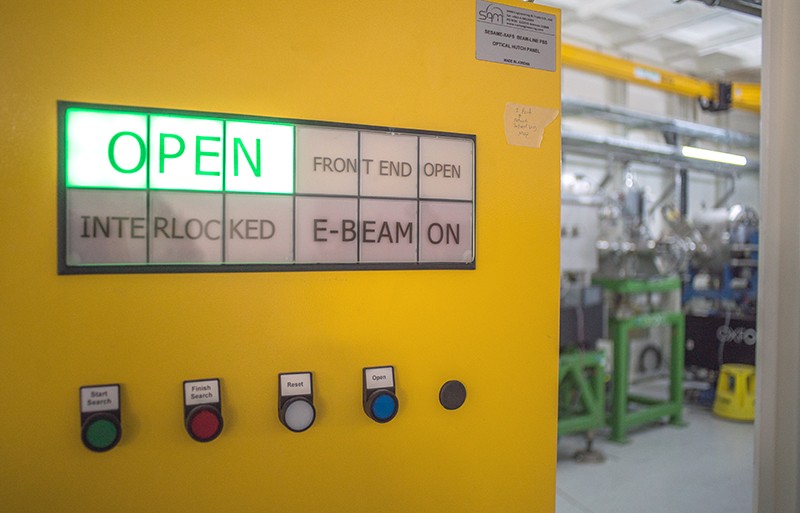Scientists are advancing plans for Africa’s first synchrotron light source, a particle accelerator that produces intense radiation used to probe the structure and behaviour of matter at the molecular and atomic level.
Globally, there are some 70 light sources — synchrotrons and free electron lasers — but none of them is in Africa. “These light sources are just transforming science, and Africa has to be a player,” says Sekazi Mtingwa, a theoretical high-energy physicist from the United States and one of the founders of the African Light Source (AfLS) Foundation, which is based in South Africa. The foundation is one of two organizations behind the light-source push.
Synchrotrons, which use light predominantly in the X-ray range, have played a critical role during the COVID-19 pandemic, as they have been used to investigate the structure of the virus and to develop antiviral drugs, among other applications. “If you don’t have those kinds of infrastructure, you’re going to pay a bigger cost down the road,” Mtingwa says. If there was ever a time to establish a synchrotron facility, he adds, now “is the time Africa should really jump on board”.
The facility will cost an estimated US$1 billion — one-third each for the hardware, the buildings and investment in researchers, including training programmes. In addition, around $100 million a year will be needed in running costs, says AfLS executive committee chair Simon Connell, a high-energy physicist at the University of Johannesburg in South Africa. Funding for the project would have to come from African member states. The project team says that once a decision is made on which country to locate it, it will probably be about ten years before the synchrotron is open for science.
However, John Mugabe, who studies science and innovation policy at the University of Pretoria, questions whether the project will be able to raise the required funding, at least in the short to medium term. Africa’s governments are struggling to get adequate funding for their domestic projects, he told Nature in an e-mail. Even when it comes to national research and development (R&D) projects, Mugabe says, “Most do not have mechanisms and instruments for financing R&D and R&D infrastructure projects.”
Governance will be another challenge. At present, there are two independent groups of researchers working towards a light source. One is the AfLS, chaired by Connell. Another is the Africa Synchrotron Initiative, which is convened by the African Academy of Sciences (AAS), based in Nairobi, and chaired by Shaaban Khalil, director of the Center for Fundamental Physics at Zewail City of Science and Technology near Cairo. As yet, the two are not merging their efforts, although there are members of the AfLS Foundation on the AAS committee.
Khalil says that despite management and funding problems that have been publicized in recent months, the AAS, as a science academy, has experience in managing projects and funding, and is well placed to engage with governments and funders. Connell says the AfLS is in discussions with the academy. “There should be one voice, even if there are several correlated efforts and organizations involved,” he adds.
An ‘incredible attractor’
The light-source project, nonetheless, has wide backing from the global synchrotron community. “A light source can be an incredible attractor for strengthening an African community,” says Francesco Sette, director-general of the European Synchrotron Radiation Facility (ESRF) in Grenoble, France. But it will need “very strong political engagement” from countries to ensure that it is properly financed, he says.
The AfLS is calling on scientists and research organizations who need such a facility to explain the many different ways they intend to use it. These ‘letters of intent’ will form part of a conceptual design review for the AfLS, a road map laying out evidence for the type of light source required, the science it can undertake, and where it should be located, among other things. The window for submitting letters of intent closes in December. AfLS Foundation members anticipate that some of the letters will form the basis of articles to be submitted to journals for publication.
“For the conceptual design review, we are recruiting as widely as possible in Africa and globally,” says Connell. He is calling on scientists and organizations in Africa, the continent’s diaspora, and anyone around the world who is interested in working on the proposed facility to submit letters.
The idea for an African light source has been discussed since at least 2000, although Mtingwa says he has been advocating for a light source since the late 1980s. In 2018, the African Union’s executive council called on its member states to support a pan-African synchrotron. The following year, Ghanaian President Nana Addo Dankwa Akufo-Addo began championing the project.
Physicist Rolf Heuer, president of the council of SESAME, the Middle East synchrotron based in Jordan, says the facility has benefited both science and international relations. It opened for researchers in 2017 and comprises a 2.5-gigaelectronvolt synchrotron light source. Members include Cyprus, Egypt, Iran, Israel, Jordan, Pakistan, the Palestinian Authority and Turkey. Heuer says there is always more demand for time-slots to use it, known as beam time, than there are slots available. “I don’t know of any other facility where Israeli people, Palestinian people and Iranian people are working together,” Heuer says.
SESAME was built using parts of a decommissioned German synchrotron called BESSY I, although SESAME's performance has been enhanced over its predecessor's. The facility took around 20 years from inception to completion. Heuer says that a light source for Africa should aim to use state-of-the-art technology. “Don’t use equipment which others gift to you because they don’t want it anymore,” he advises.
"light" - Google News
October 27, 2021 at 10:20PM
https://ift.tt/3BpZJMl
Plan for Africa's first synchrotron light source starts to crystallize - Nature.com
"light" - Google News
https://ift.tt/2Wm8QLw
https://ift.tt/2Stbv5k
Bagikan Berita Ini















0 Response to "Plan for Africa's first synchrotron light source starts to crystallize - Nature.com"
Post a Comment